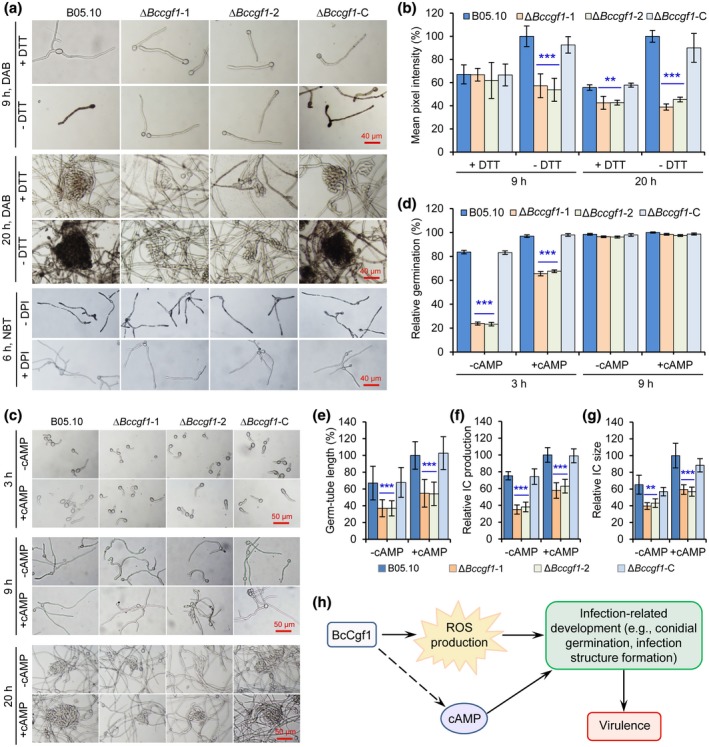FIGURE 8.

BcCGF1 regulates endogenous reactive oxygen species (ROS) production in Botrytis cinerea and cAMP rescues the infection‐related development in the BcCGF1 deletion strains. Conidia of the wild type (B05.10), ∆Bccgf1, and ∆Bccgf1‐C strains were cultivated on complete medium (CM) or CM supplemented with diphenylene iodonium (DPI) or dithiothreitol (DTT) at 20 °C for the indicated lengths of time, and then the germ tubes or hyphae/mycelia of the tested strains were stained with 3,3′‐diaminobenzidine (DAB) or nitroblue tetrazolium (NBT) solution as previously described (Cao et al., 2018; Hou et al., 2020). (a) Disruption of BcCGF1 reduced ROS production in the ∆Bccgf1 mutants during infection‐related development detected by DAB or NBT staining. (b) Quantification of relative ROS production by the mean pixel intensity in the tested strains shown in (a). (c) Exogenous cAMP rescued the defect of infection‐related development of the mutants. Quantification of conidial germination (d), germ tube length (e), infection cushion (IC) production (f), and infection cushion size (g) of the tested strains supplemented with or without exogenous cAMP. (h) A model describing BcCgf1 regulation of B. cinerea pathogenesis via mediating infection‐related development and virulence controlled by BcCgf1‐mediated ROS production. Data represent means ± SD from three independent experiments. **, *** significance at p < .01 and p < .001, respectively
